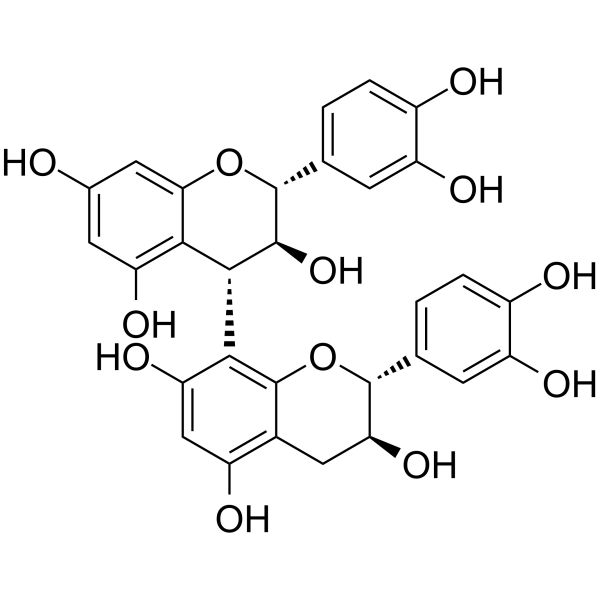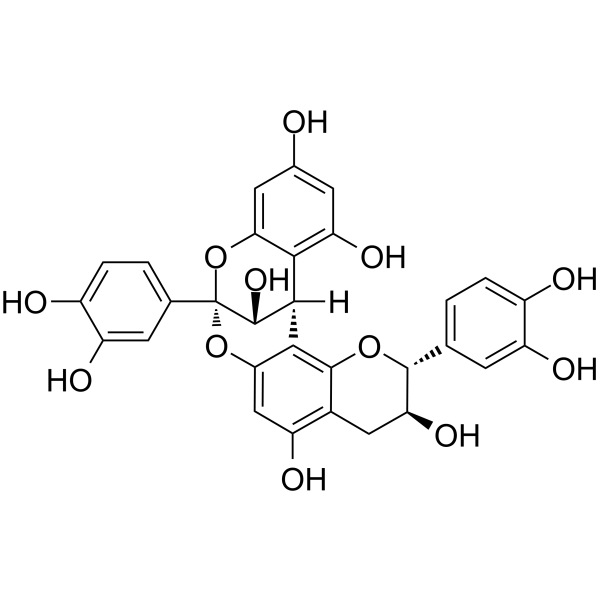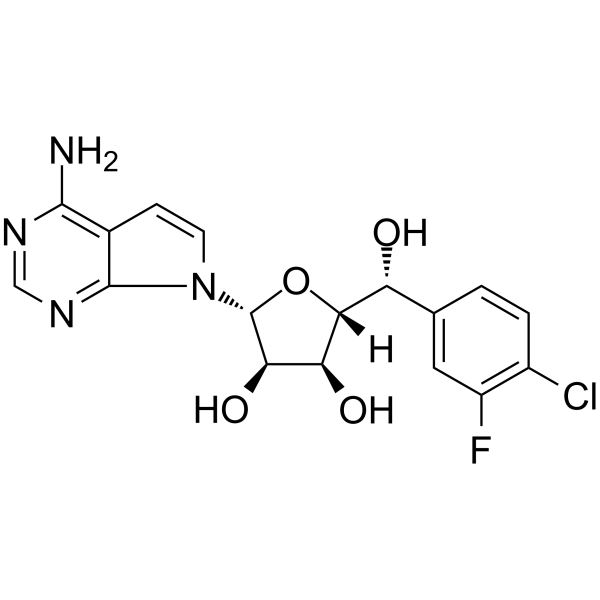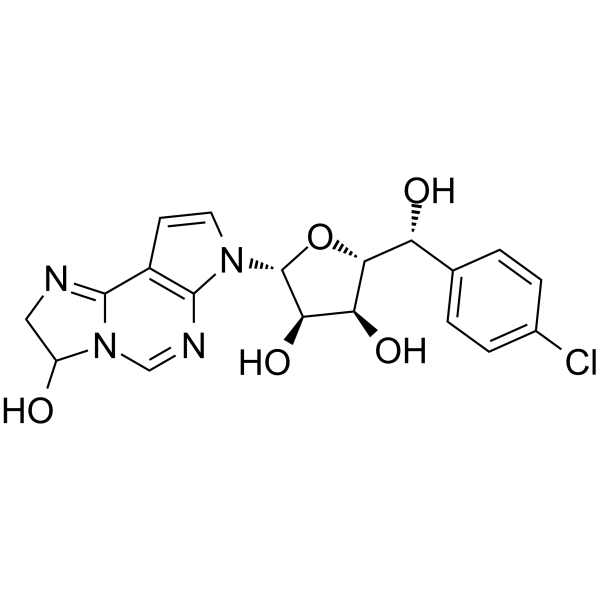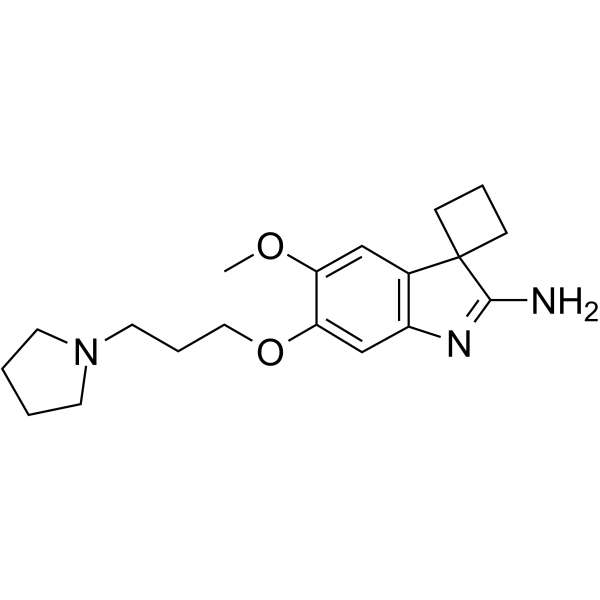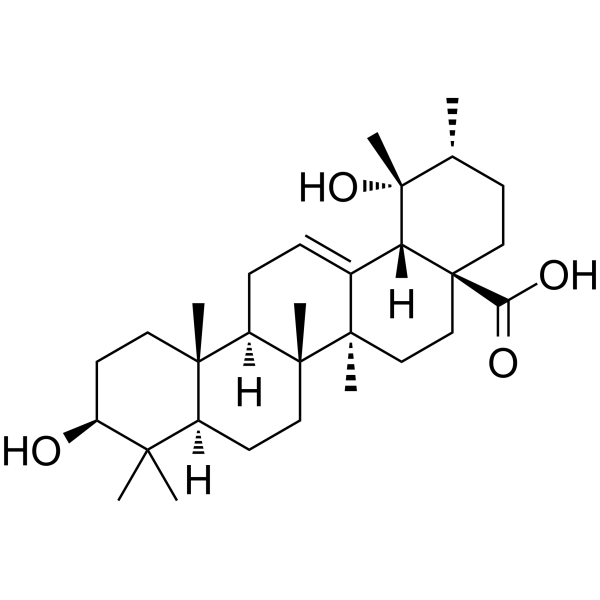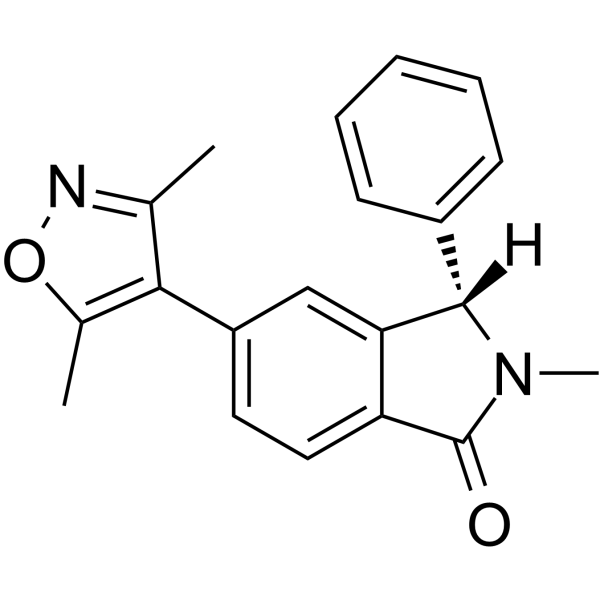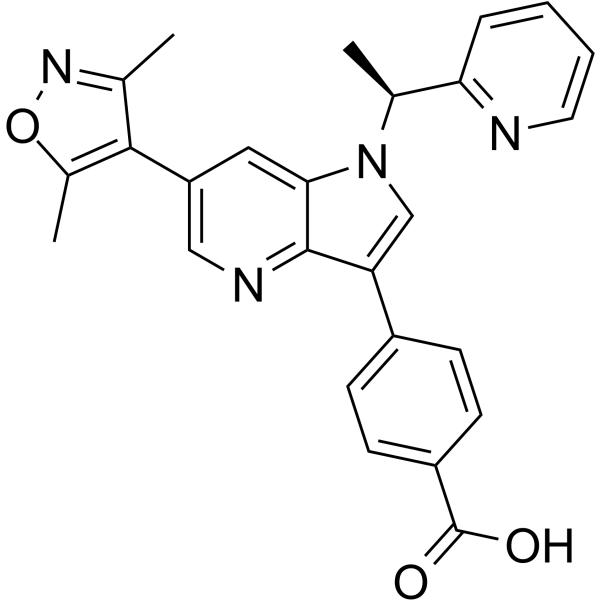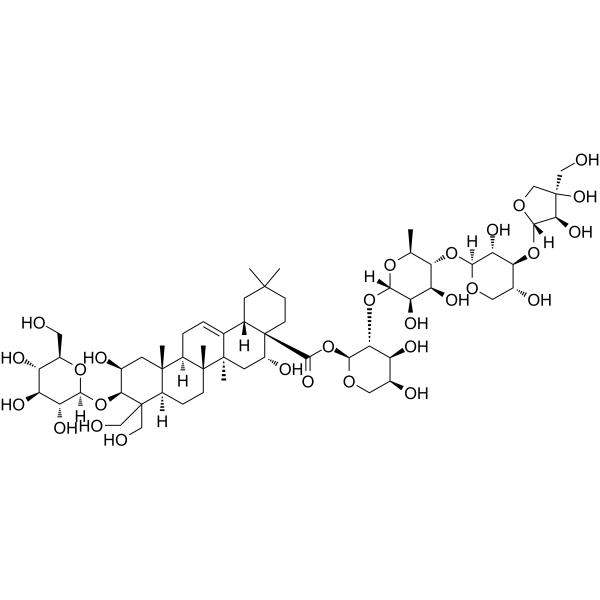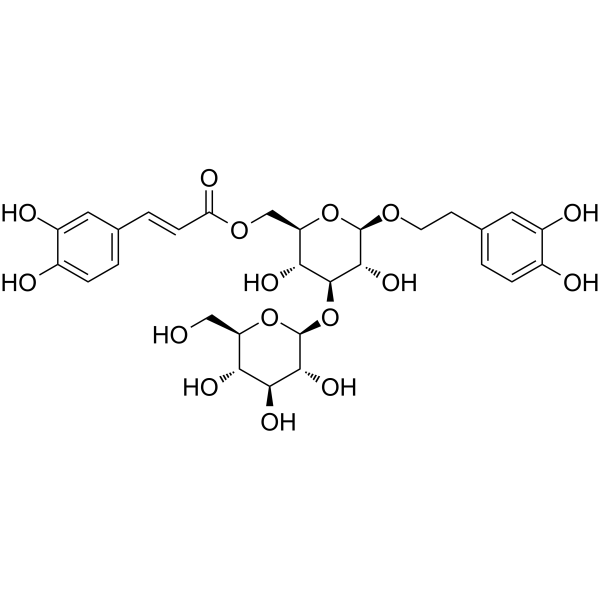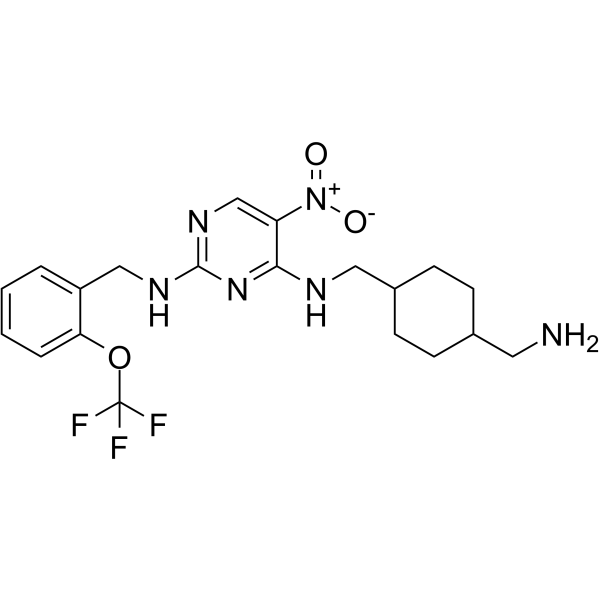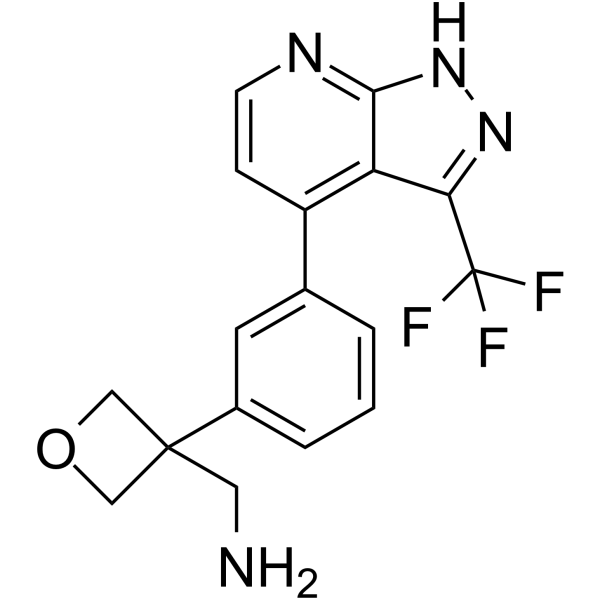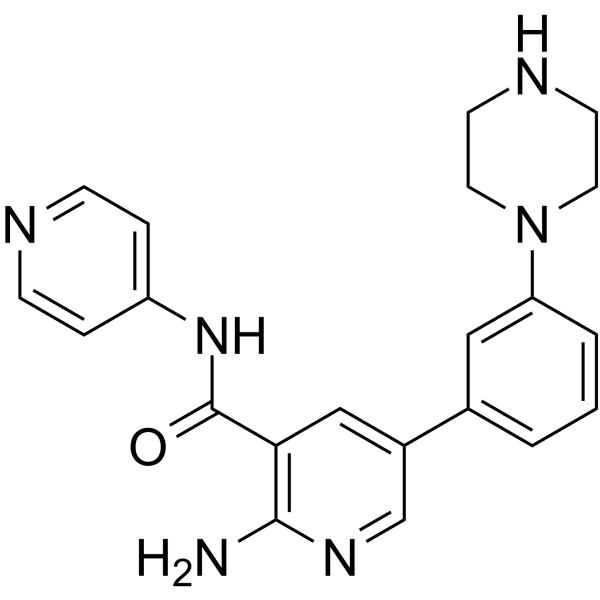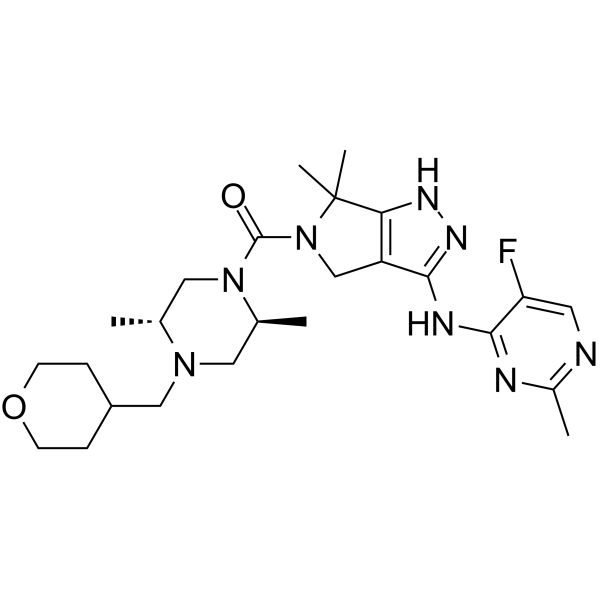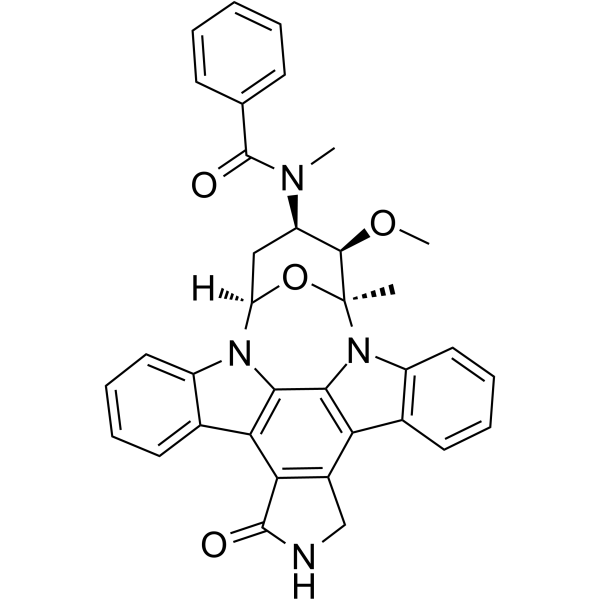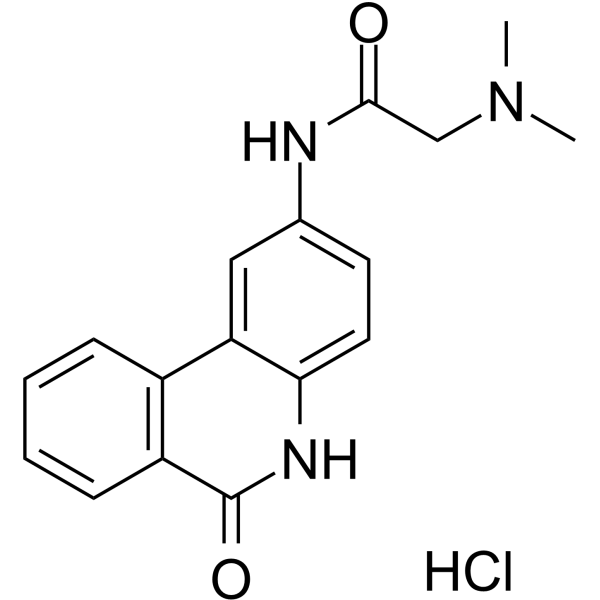|
BP14135
|
Procyanidin B3
|
|
|
|
|
Procyanidin B3(B3) is a procyanidin dimer that is widely studied due to its high abundance in the human diet and antioxidant activity.
|
|
BP14134
|
Procyanidin A1
|
|
|
|
|
Procyanidin A1 has antiallergic effects, it inhibits degranulation downstream of protein kinase C activation or Ca2+; influx from an internal store in RBL-2H3 cells.
|
|
BP14133
|
PRMT5-IN-2
|
|
|
|
|
PRMT5-IN-2 is an inhibitor of protein arginine methyltransferase 5.
|
|
BP14132
|
PRMT5-IN-1
|
|
|
|
|
PRMT5-IN-1 is a covalent inhibitor of protein arginine methyltransferase 5 (PRMT5)(IC50 of 11 nM for PRMT5/MEP50).
|
|
BP14131
|
A-366
|
|
|
|
|
Potent and selective G9a/GLP histone lysine methyltransferase inhibitor (IC50 = 3.3 nM). Exhibits >1000-fold selectivity for G9a/GLP over 21 other methyltransferases. Decreases levels of lysine 9 dimethylation on histone H3 (H3K9Me2) in PC3 cells.
|
|
BP14130
|
Pomolic acid
|
|
|
|
|
Pomolic acid has anti-cancer, anti-inflammatory and apoptotic activities, it can induce apoptosis in SK-OV-3 cells, which is mediated by the mitochondrial-mediated intrinsic and death receptor-induced extrinsic pathways.
|
|
BP14129
|
PNZ5
|
|
|
|
|
PNZ5 is a potent and isoxazole-based pan-BET inhibitor, with high selectivity and potency similar to the well-established (+)-JQ1, with a KD of 5.43 nM for BRD4(1).
|
|
BP14128
|
PLX51107
|
|
|
|
|
PLX51107 is a potent and selective BET inhibitor (Kds: 1.6, 2.1, 1.7, and 5 nM for BRD2-BD1, BRD3-BD1, BRD4-BD1, and BRDT-BD1).
|
|
BP14127
|
Platycodin D
|
|
|
|
|
Platycodin D may stimulate TNF-α synthesis or inhibit degradation of TNF-α mRNA. Platycodin D (10/30 μM) suppresses prostaglandin E2 production in rat peritoneal macrophages stimulated by the protein kinase C activator 12-O-tetradecanoyl phorbol 13-acetate (TPA). Platycodin D and D3 are useful as expectorant agents in the treatment of various airway diseases, they can increase mucin release from rat and hamster tracheal surface epithelial cell culture and also from intact rat trachea upon nebulization.
|
|
BP14126
|
Plantainoside D
|
|
|
|
|
Plantainoside D shows potent antioxidative effects as those of ascorbic acid, it shows angiotensin-converting enzyme (ACE) inhibitory inhibitory activity in vitro with the IC(50) value of 2.17 mM, it also shows inhibitory activity against PKCalpha with the IC50 value14.8microM.
|
|
BP14125
|
PKCε Inhibitor Peptide acetate
|
|
|
|
|
PKCε Inhibitor Peptide acetate is a selective PKCε inhibitor containing the site for its specific receptor for activated C kinase (RACK). PKCε Inhibitor Peptide acetate inhibits the translocation of PKCε, but not α-, β-, and δPKC.
|
|
BP14124
|
PKC-theta inhibitor
|
|
|
|
|
PKC-theta inhibitor is PKC-θinhibitor, with an IC50 of 12 nM.
|
|
BP14123
|
PKC-theta inhibitor hcl
|
|
|
|
|
PKC-theta inhibitor is a selective PKC-θinhibitor(IC50:12 nM).
|
|
BP14122
|
PKC-theta inhibitor 1
|
|
|
|
|
PKC-theta inhibitor 1 is an inhibitor of PKCθ (Ki of 6 nM)
|
|
BP14121
|
PKC-iota inhibitor 1
|
|
|
|
|
PKC-iota inhibitor 1 is an inhibitor of protein kinase C-iota (PKC-ι; IC50 : 0.34 μM)
|
|
BP14120
|
PKC-IN-1
|
|
|
|
|
PKC-IN-1 is an ATP-competitive and reversible conventional PKC enzymes inhibitor (PKCα, PKCβI, PKCβII, PKCθ, PKCγ, PKC mu and PKCε with IC50s of 2.3, 8.1, 7.6, 25.6, 57.5, 314, 808 nM, respectively).
|
|
BP14119
|
Midostaurin
|
|
|
|
|
PKC412(Midostaurin; CGP41231; CGP41251) is a broad spectrum protein kinase inhibitor. Midostaurin inhibits protein kinase C alpha (PKCalpha), vascular endothelial growth factor receptor 2 (VEGFR2), c-kit, platelet-derived growth factor receptor (PDGFR) and FMS-like tyrosine kinase 3 (FLT3) tyrosine kinases, which may result in disruption of the cell cycle, inhibition of proliferation, apoptosis, and inhibition of angiogenesis in susceptible tumors.
|
|
BP14118
|
PKC ζ pseudosubstrate acetate
|
|
|
|
|
PKC ζ pseudosubstrate acetate is an inhibitor of protein kinase C (PKC) ζ; attached to cell permeabilisation Antennapedia domain vector peptide. Consists of amino acids 113 - 129 of PKC ζ pseudosubstrate domain linked by a disulphide bridge to the Antennapedia domain vector peptide. The Antennapedia peptide is actively taken up by intact cells, at 4 or 37°C, ensuring rapid and effective uptake of the inhibitor peptide. Once inside the cell, the disulphide bonds are subjected to reduction in the cytoplasm leading to release of the inhibitor peptide. Induces mast cell degranulation by a PKC ζ-independent pathway.
|
|
BP14117
|
PKC β pseudosubstrate acetate
|
|
|
|
|
PKC β pseudosubstrate acetate is a selective cell-permeable inhibitor of PKC.
|
|
BP14116
|
PJ34 hydrochloride
|
|
|
|
|
PJ34 hydrochloride is a potent specific inhibitor of PARPl/2.
|
